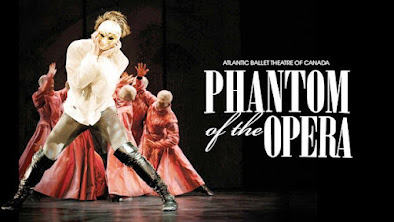Vocal Buffet Part 2: All You Can Eat? Maybe, But Very So Carefully As Well...
I hope that you have enjoyed reading the “Vocal Buffet, blog. "Part 1”
There, we were talking mainly about the amateur singers who were trying to sing anything and everything under the sun with no proper training, knowledge or even talent. In this blog, we will talk about the diet, nutrition and exercise for those who want to choose, or have already chosen singing and/or performing, as their career.
There is a saying: “We are what we eat”. I would also say: “Because of what we eat, we are what we sing also”. How so, you may ask? The person who is at least reasonably fit and well-nourished would definitely sound much healthier i.e. much clearer and much stronger.
There is also a saying that: “in a healthy body, is a healthy spirit”.
My regular readers probably remember that in some blogs written in the past, I stated that the voice is a spirit, which has to be discovered, uncovered and then flown away from and on top off of the physical body. If the spirit is healthy and pure, it will soar that much higher and its trajectory will be that much longer.
If the singer's throat happens to be full of mucus and the vocal cords possible can be burnt by gastric acids, the lift of the voice (i.e. the spirit) will not be "flying" high enough; and thus the actual high range and low range, for that matter, will be greatly diminished.
The Vocal Science™ Method, and the standards of professional singing for that matter, suggest that even the lower range approach cannot be achieved without lifting the voice off of the vocal box (off of the vocal cords) and settling the sound in the upper vocal chambers (sinus cavities).
Let’s now imagine a ballerina trying to jump to the arms of her partner (during the Pas de Deux) off of the thick carpet instead of the hard flat surface (special floor). The question is: How high could she jump, not having a proper, pristine resistance under her feet?
My guess would be, not too high... evidently.
The figure
skaters like Elvis Stojko, or Patrick Chan for that matter, would never
be able to perform their quads or even triple combination jumps if they
were taking off for the jumps with the ice, so to speak, instead of off the ice, in a manner of speaking.
The fact is that in that instance, they would need to do triple or quadruple "revolutions" with not enough height taken off of the ice, which, in reality, it would make it completely and utterly impossible to achieve the latter. So, if the singers were to eat a lot of spicy foods and also consume a lot of dairy products, they, most likely, would possess a lot of mucus in their bodies and nevertheless, by osmosis, in their throats.
If they ingest a lot of acidic foods (like tomatoes and oranges for example), no doubt that they will also acquire what is called an “acid reflux”.
In 1999, I had an article written about me by the Toronto Star newspaper named “Coach Me If You Can” with the subtitle "Not as Easy as it Sounds". The journalist was taking a lesson herself while writing. After experiencing 5 hours of my instruction, she exclaimed:
I also added, that the Vocal Science™ Method and its very unique voice/vocal technique, is definitely not for the people with below-average IQ...The person who wants to become a singer/performer has to be physically, emotionally, mentally and vocally fit.
Some time ago, I caught a part of the movie which was called Mirrors. This movie was about the life of ballet dancers. The episode that became very memorable to me was about the 2 dancers who came to the theatre management to discuss their contract to perform as a duet “pas de deux”.They were handed a contract, which after reading it, the male dancer outright returned it back to the manager’s hands.
Then he looked at his female partner to be, who looked quite fragile, in my opinion, and asked her: “how much do you weigh?” She looked at him with fear in her eyes and said: “100 pounds”.
The male dancer looked at the manager and said: “I have to lift her 6 times. That is 600 pounds!” The manager smiled and handed them an appropriate contract, which they accepted.
That is a clear example of how a professional artist (be it ballet, figure skating or singing performer for that matter), thinks. Could you imagine if the female ballet dancer, weighing 100 pounds (as we just learned), decided to go out and eat a meat-heavy dinner, pizza or cake? If she did, she could have come back on stage weighing 101, or even 102 pounds!
Remember that her partner, for a certain amount of money, was prepared only to lift 600 pounds of her in total. Also, he could have just simply dropped her (not expecting her to be heavier by a few pounds) and thus that could cause an accident, God forbid. I personally witnessed a pretty heavy (by any standards) dancer attempting to be lifted and be nearly dropped.
Believe it or not, it has occurred on our Canadian stage during The Phantom of the Opera Musical Production. Thank God the accident did not happen and, to my delight and comfort, that it was not a classical ballet performance.
So the singer's weight and height and overall adequate fitness level would play a crucial role in an artist’s (amateur or professional) performance. The physical body is the internal and external "instrument", which if played correctly on, will sound like a million bucks…
There, we were talking mainly about the amateur singers who were trying to sing anything and everything under the sun with no proper training, knowledge or even talent. In this blog, we will talk about the diet, nutrition and exercise for those who want to choose, or have already chosen singing and/or performing, as their career.
There is a saying: “We are what we eat”. I would also say: “Because of what we eat, we are what we sing also”. How so, you may ask? The person who is at least reasonably fit and well-nourished would definitely sound much healthier i.e. much clearer and much stronger.
There is also a saying that: “in a healthy body, is a healthy spirit”.
My regular readers probably remember that in some blogs written in the past, I stated that the voice is a spirit, which has to be discovered, uncovered and then flown away from and on top off of the physical body. If the spirit is healthy and pure, it will soar that much higher and its trajectory will be that much longer.
If the singer's throat happens to be full of mucus and the vocal cords possible can be burnt by gastric acids, the lift of the voice (i.e. the spirit) will not be "flying" high enough; and thus the actual high range and low range, for that matter, will be greatly diminished.
The Vocal Science™ Method, and the standards of professional singing for that matter, suggest that even the lower range approach cannot be achieved without lifting the voice off of the vocal box (off of the vocal cords) and settling the sound in the upper vocal chambers (sinus cavities).
Let’s now imagine a ballerina trying to jump to the arms of her partner (during the Pas de Deux) off of the thick carpet instead of the hard flat surface (special floor). The question is: How high could she jump, not having a proper, pristine resistance under her feet?
My guess would be, not too high... evidently.
The fact is that in that instance, they would need to do triple or quadruple "revolutions" with not enough height taken off of the ice, which, in reality, it would make it completely and utterly impossible to achieve the latter. So, if the singers were to eat a lot of spicy foods and also consume a lot of dairy products, they, most likely, would possess a lot of mucus in their bodies and nevertheless, by osmosis, in their throats.
If they ingest a lot of acidic foods (like tomatoes and oranges for example), no doubt that they will also acquire what is called an “acid reflux”.
In 1999, I had an article written about me by the Toronto Star newspaper named “Coach Me If You Can” with the subtitle "Not as Easy as it Sounds". The journalist was taking a lesson herself while writing. After experiencing 5 hours of my instruction, she exclaimed:
“It is definitely not for the faint of heart”.
Indeed. It is not.I also added, that the Vocal Science™ Method and its very unique voice/vocal technique, is definitely not for the people with below-average IQ...The person who wants to become a singer/performer has to be physically, emotionally, mentally and vocally fit.
Some time ago, I caught a part of the movie which was called Mirrors. This movie was about the life of ballet dancers. The episode that became very memorable to me was about the 2 dancers who came to the theatre management to discuss their contract to perform as a duet “pas de deux”.They were handed a contract, which after reading it, the male dancer outright returned it back to the manager’s hands.
Then he looked at his female partner to be, who looked quite fragile, in my opinion, and asked her: “how much do you weigh?” She looked at him with fear in her eyes and said: “100 pounds”.
The male dancer looked at the manager and said: “I have to lift her 6 times. That is 600 pounds!” The manager smiled and handed them an appropriate contract, which they accepted.
That is a clear example of how a professional artist (be it ballet, figure skating or singing performer for that matter), thinks. Could you imagine if the female ballet dancer, weighing 100 pounds (as we just learned), decided to go out and eat a meat-heavy dinner, pizza or cake? If she did, she could have come back on stage weighing 101, or even 102 pounds!
Remember that her partner, for a certain amount of money, was prepared only to lift 600 pounds of her in total. Also, he could have just simply dropped her (not expecting her to be heavier by a few pounds) and thus that could cause an accident, God forbid. I personally witnessed a pretty heavy (by any standards) dancer attempting to be lifted and be nearly dropped.
Believe it or not, it has occurred on our Canadian stage during The Phantom of the Opera Musical Production. Thank God the accident did not happen and, to my delight and comfort, that it was not a classical ballet performance.
So the singer's weight and height and overall adequate fitness level would play a crucial role in an artist’s (amateur or professional) performance. The physical body is the internal and external "instrument", which if played correctly on, will sound like a million bucks…




